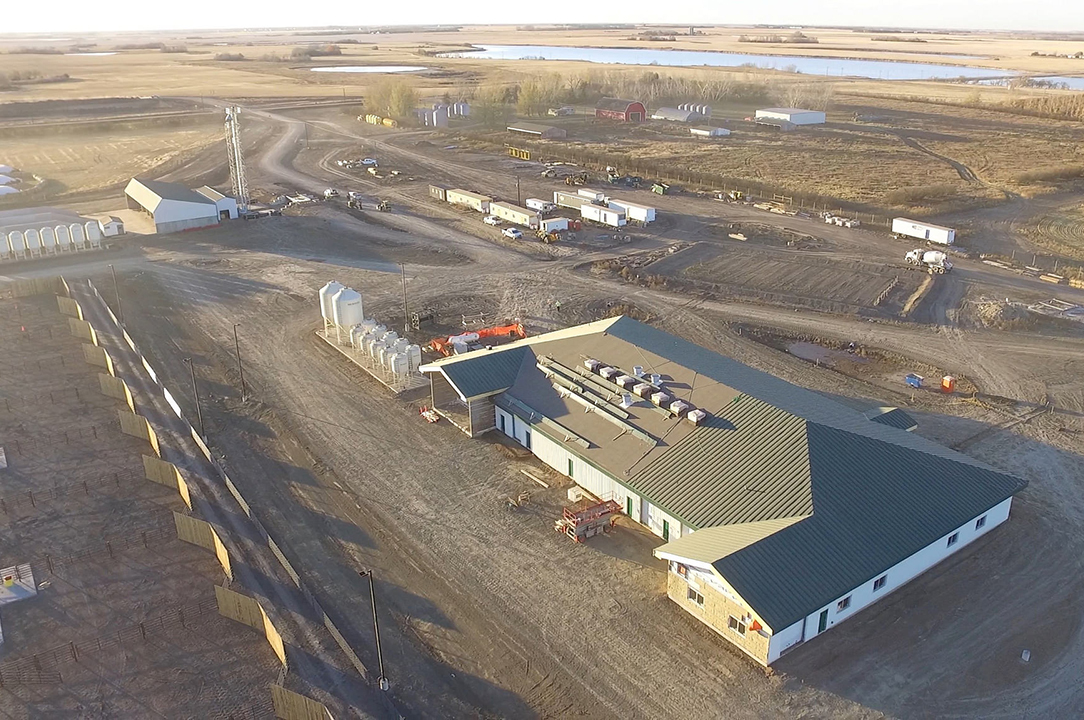
A&W advances the U of S global leadership in beef and forage research
Donation marks an extraordinary collaboration between government, the university and industry
SASKATOON – A&W has made a substantial investment in the Canadian beef industry with a $5-million donation toward the University of Saskatchewan’s (U of S) Livestock and Forage Centre of Excellence (LFCE).
The unique centre will foster innovative research, training and outreach to meet the needs of both livestock producers and consumers in Canada, while also helping to sustainably produce food for a growing world population.
The donation will be used to fund the construction of the Livestock and Food Building at the LFCE site near Clavet ($3 million), create a community outreach and engagement program ($1 million), and establish a visiting fellowship in One Health research ($1 million). The new building will be completed in the spring of 2018.
“A&W is deeply committed to the Canadian beef and forage industry,” said Jefferson Mooney, chairman emeritus, A&W. “Our investment is an investment in the future of Canadian food and best practices to make that food.”
“A&W, the University of Saskatchewan and Canadian ranchers all believe in good food, farmed with care. Together, we are forging continued advancement and innovation for healthy, sustainable growth,” said Susan Senecal, chief operating officer, A&W. “We are united in a passion for great beef.”
The new Livestock and Food Building will be the heart of livestock operations at the LFCE and a major location for research and teaching activities. It will also act as a hub for the community outreach program, which will offer presentations and seminars for both industry representatives and consumers.
U of S President Peter Stoicheff said support from strategic partners has been essential in making the LFCE a reality.
“The LFCE project epitomizes the university’s One Health initiative, bridging the gaps between human, animal, and ecosystem health. This could not be accomplished without a strong network of collaborators, whose support will help position the LFCE as a global leader in beef cattle and forage research and innovation, and provide science-based solutions to real-world challenges.”
Other significant capital contributions to date include $10 million from the federal and provincial government through the Growing Forward 2 program, $4.47 million from the Government of Canada’s Western Economic Diversification Canada, $10 million from the U of S, and $1 million from the Saskatchewan Cattlemen’s Association.
“Saskatchewan ranchers are leaders in land and livestock health and management practices. With government and industry collaboration, we are able to accomplish even more,” said Ryder Lee, CEO, Saskatchewan Cattlemen's Association. “We are thrilled to help the university expand and improve its research capacity to find real world solutions to issues facing the livestock industry.”
Mary Buhr, dean of the U of S College of Agriculture and Bioresources, said this strategic relationship will add another dimension to the university’s One Health initiative and research that focuses on the link between beef production practices, environmental wellbeing and human health and nutrition.
“The LFCE will take a holistic approach to understanding the relationship between human health, animal health and our environment,” Buhr said. “A&W’s extraordinary support is a demonstration of the power of teamwork to significantly improve the impact of innovative research and outreach on the livestock and forage industries.”
Douglas Freeman, dean of the Western College of Veterinary Medicine, added that the development of the LFCE wouldn’t be possible without the extraordinary partnership.
“Two areas of preeminence at the U of S converge with the LFCE: agriculture and One Health. The centre also represents a unique partnership between the university, government and industry. The scale of partnership and collaboration are extraordinary,” said Freeman. “Working together we can accomplish so much more and have a major impact on health, production and food security. We’re excited to develop this new partnership with A&W and work together to achieve the promise and potential of the LFCE.”
Two new facilities for the LFCE are expected to be completed in the spring of 2018 and will complement current livestock and forage research sites. They are designed for research and teaching and outreach in forage, cow-calf and beef cattle production. The LFCE will unite livestock and forage field laboratories and science labs in a collaborative centre with a total cost of $36 million.
For more information about the project, visit Livestock and Forage Centre of Excellence
-30-
For more information, please contact:
Jennifer Thoma
Media Relations Specialist
University of Saskatchewan
306-966-1851
jennifer.thoma@usask.ca
Nic Canning
Account Manager
Smithcom Ltd.
413-992-7187
nic.canning@smithcom.ca

